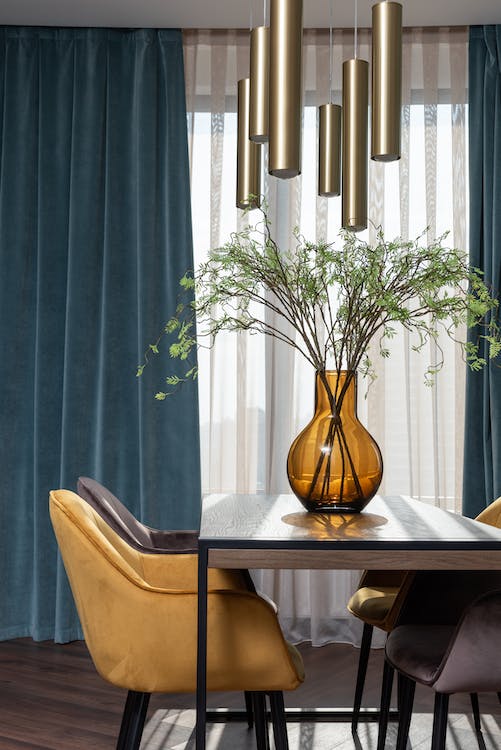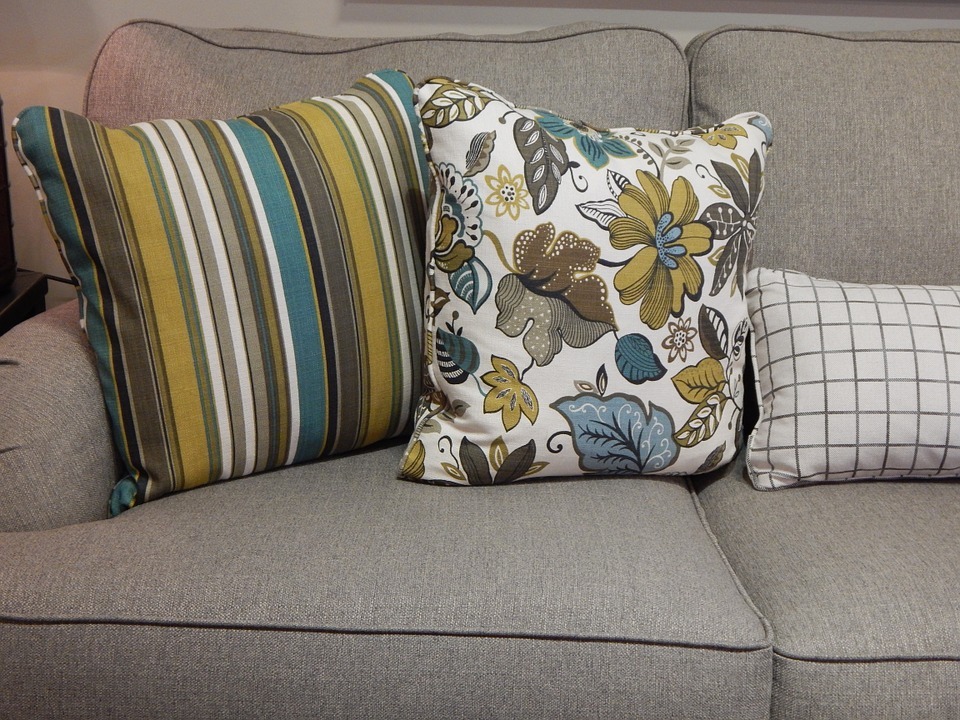Not all people have the luxury of having matched sets that make your home look like those in the magazines. It’s either they are constrained by budget and they could only afford items from thrift shops, or they received a bunch of hand-me-down furniture and it would be impractical not to use them. But, there are also a lot of people who find mismatched pieces on an interior beautiful and adorable. Mismatched home décor is a trend – just look at a local artisan café you enjoy – and they are using the art of mixing different-styled furniture to create a different yet cohesive and stylish interior.
You too can pull that off without making your home look like a messy collection of yard sale finds. Here are some tips on how you can mix and match your furniture while making them look like a perfect match.
1. Find the same patterns, designs, colors, and materials.
Even if your furniture doesn’t match, you can still find similarities in patterns, designs, colors, and materials. Match those similar elements to create consistency or use other items to tone them down. In dealing with:
Materials – You may pick wood, plastic, metal or fabric. If you have a wooden table, it’s best to find ways to incorporate wood into your room. If you have a metallic chair, better pair it with sconces or pendant lighting with visible metallic features. But don’t limit yourself; you can condense your material choices up to two. A bedroom with a wooden bed frame and plastic side table will still look matching if you would stick to one color.
Patterns – Catch those patterns like florals, stripes, and geometrics and play with those. Use accent pieces like rugs, blankets, sconces or pops of colors to emphasize certain patterns and mute others. For instance, if you have a couch full of patterns, find a more neutral pillow or rug in solid, dominating colors to tone down the volume of the loud, eye-catching and old-fashioned couch.
Designs – Find a way to restrict your design choices in furniture whether by design style, country of origin, designer or era. Even if mismatched, home décor from a single design style or era work together without even putting some effort.
Colors – Color repetition is the secret to success for keeping a room unified even with mismatched furniture. Pick a color from the side tables, a rug, an upholstery, and repeat it somewhere else in the room like on a lamp, a vase or a pillow. If your room already has a lot of mismatched colors (like for instance, in a Bohemian theme), try to find a painting or an area rug that contains some of the same hues.
2. Choose a theme.
The way to unify mismatched furniture is to create a theme (or combine two) for the room. Look at your existing furniture and accent pieces and determine their shared thread, like if they have this beachy look, a travel theme or perhaps an 80s vibe. For instance, an item of whitewashed furniture and a rustic crate ottoman both give the coastal to nautical feel, so set it as your theme. Decorate the room with items related to the theme like a wreath that looks like a life ring, apothecary jars full of shells and sand, and a rug with a compass pattern. You can make DIY projects for the accents yourself if in case you can’t find any from flea markets or other shops.
3. Make a statement.
When using different furniture in the same room, create a focal point with a unique piece. Colorful, mismatched furnishings can look toned down with a simple wall décor or a neutral-colored but eye-catching light fixture. If you have understated and muted mismatched furniture, make it look more interesting with a statement rug. Remember to find balance by sticking to the color combinations of the existing furniture. You may also use something of the same material with the other items in the room.
4. Combine light and bright colors.
Bold and bright looks best with muted and light. Some furniture you have may act as a statement piece or a bold splash of color to a room, but their lively effect would only work if you tone down other pieces as well as the backdrop. For instance, if you have a French-style dresser refurnished in hot pink paint plus a yellow-and-blue floral-patterned chair in the bedroom, keep the walls white and the curtains plain and light. This keeps the brighter colored pieces from being too overbearing.
5. Keep everything else simple.
If you want a more visually relaxing interior, stick with simple accents and neutral colors. Limit colors to avoid getting too unwieldy. You might as well mute the bold hues to keep it from being too neutral. Or you can stick to a single color palette of different shades. Painting two mismatched side tables with white would make a crisp and clean look – people won’t even notice that the side tables were not the same.
6. Paint your furniture.
If you really can’t make something beautiful and cohesive out of your mismatched pieces, paint them! If you have mismatched dining chairs, spray paint their legs with a single color to make them match. Paint the inside walls of a bookcase with the color of the couch in the same space. Paint mismatched picture frames with the same color of the textiles in the room. Find a common color and paint it with that hue. Look into the color family to make them work together. Or, find complementary colors to create an appealing contrast.
7. Keep mismatched seats at level with one another.
The dining area is where you can really experiment with mismatched furniture. Dining room chairs in a variety of colors and designs are fun to match, but it’s important to choose chairs of the same height to keep the look organized. Choose the dining table first before picking out your chairs. And don’t worry if not even two or three of your chairs are the same – this is what would actually make your space quirky and interesting. As long as they’re of the same level, you’re good to go. Just like we said on the first tip, it’s better to match those with similarities in a material (like wood and steel), or in colors (neutrals, pastels, complementary colors). To add a fun accent that can make the look unified, hang a pendant lighting that has the same color with one or two of the chairs.
8. Play up with pillows.
If your sofa came with matching throw pillows, place them on the nearby unmatched couch or armchair. Doing this can make the two chairs matched! Also, you can play around the colors of your chairs. If your sofa is red and your armchair is yellow, use throw pillows that have red and yellow colors in them. Or, you can use the same style, color or pattern on all throw pillows you will use on both the mismatched pieces. If you have neutral-colored chairs, you may consider throwing cushions with different prints, colors, and sizes to liven up the furniture.
9. Break the rules.
There are instances when you will be compelled to break all the rules and tips for interior designing and mix up your furnishings and décor in the manner you like… Just because they look good in your perspective. You don’t have to please others. If you know it looks just right, goes and rolls with it.



